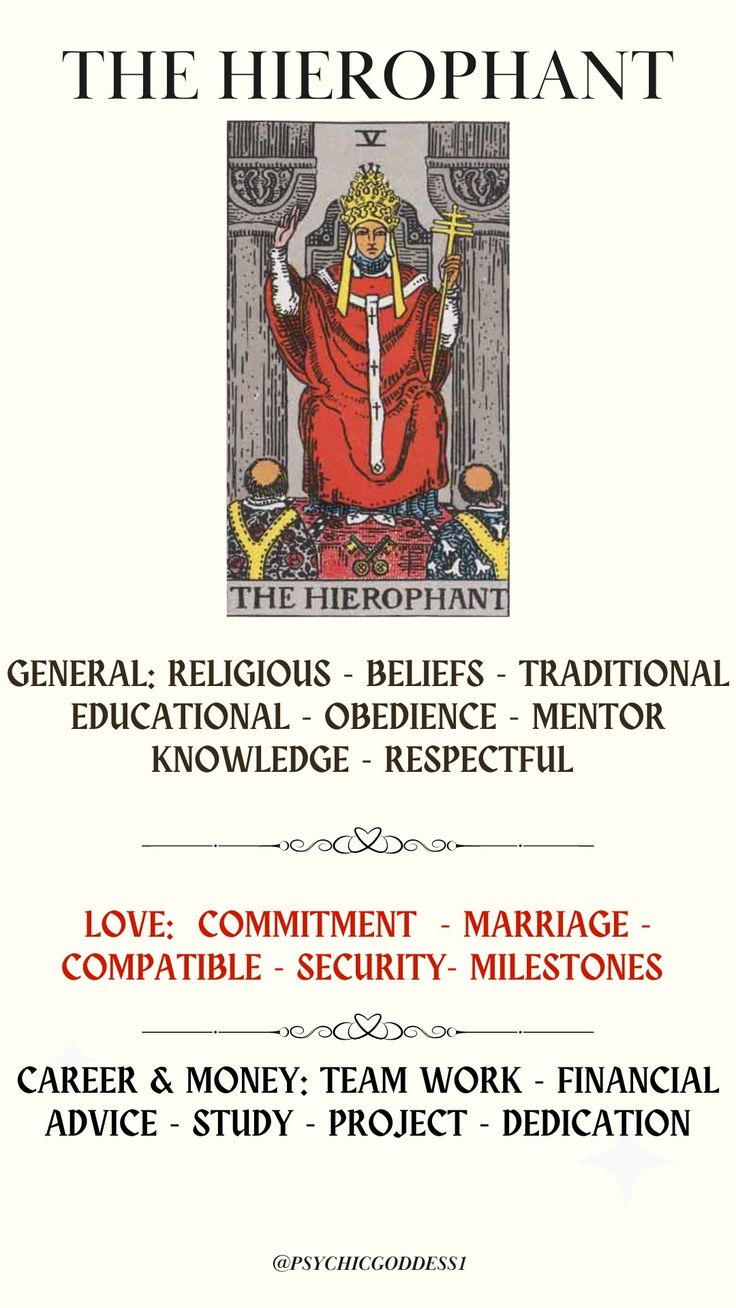The Hierophant Tarot card, nestled in the realm of the Major Arcana, is often imbued with rich symbolism and profound meaning. Typically depicted as a religious figure, the Hierophant embodies the archetype of spiritual guidance and institutional wisdom. This card, in a reading, beckons the querent towards an exploration of tradition, morality, and the collective consciousness. But beyond these familiar themes lies a transformative promise – a shift in perspective that entices curiosity and invites introspection.
At first glance, the Hierophant exudes an aura of authority and structure. His stance is reminiscent of a teacher or spiritual leader, clothed in rich robes adorned with symbolic motifs. The keys at his feet signify access to hidden knowledge and esoteric secrets, while the two acolytes at his side represent the dichotomy of learning; one seeks enlightenment from the established order, the other embodies a questioning spirit. This imagery serves as an invitation to delve deeper into the nature of knowledge and belief, urging the individual to contemplate their own truths.
The essence of the Hierophant extends beyond mere adherence to convention. To embrace the card’s message is to understand the importance of cultural rites, rituals, and shared experiences. In today’s frenetic world, where personal beliefs can often clash with societal expectations, the Hierophant reminds us that there is value in community and tradition. This perspective shift becomes pivotal for those who might feel adrift, disconnected from their roots and the larger tapestry of human experience.
When this card manifests in a reading, it may herald a time to seek mentorship or return to fundamental teachings. It challenges the individual to think about which institutions or ideas have guided their development. Are these influences still aligned with their current values, or do they require reevaluation? The Hierophant navigates the delicate balance between conformity and authenticity, showcasing the tension between personal freedom and societal obligation.
Moreover, the Hierophant can serve as a catalyst for curiosity. It compels people to ask philosophical questions concerning ethics, morality, and the essence of truth. What is our purpose? How do our beliefs shape our experiences? As the querent grapples with such inquiries, they uncover layers of understanding that may have previously eluded them. This journey often leads to a newfound appreciation for the complexities inherent in both ancient wisdom and modern thought.
Furthermore, the Hierophant offers insights into spiritual practices that transcend organized religion. Meditation, mindfulness, and self-reflection emerge as avenues for personal growth. Embracing these practices can illuminate the path towards self-discovery and genuine connection with the divine, irrespective of traditional frameworks. Thus, the card acts not merely as a beacon of institutional knowledge but as a reminder of the ever-evolving nature of spirituality.
The dialogue between the Hierophant and the individual also opens doors to discussing societal norms and ethical standards. The card prompts an exploration of the rules that govern our lives. Are they liberating, or do they constrain? It suggests that by questioning these norms, an individual can foster personal agency and reclaim their autonomy. This rebellion against the status quo does not necessitate a rejection of tradition but rather encourages a harmonious integration of personal beliefs with societal expectations.
In the realm of relationships, the Hierophant can signify a committed partnership grounded in shared values and mutual respect. It speaks to the importance of establishing a solid foundation built upon trust and understanding. In this context, the card encourages couples to explore their beliefs, traditions, and goals together, forging a bond that is both rooted in the past and adaptable to the future. Through shared experiences and agreements, relationships can flourish, illuminated by the wisdom of the Hierophant.
Conversely, when the Hierophant appears reversed in a reading, the implications are equally noteworthy. This may signal a rejection of conformity, urging the querent to redefine their belief systems independently from external influences. The reversal becomes an agent of liberation, freeing individuals from dogma and encouraging them to forge their own paths. This can prove empowering for those who feel stifled by tradition, offering them an opportunity to create a more authentic narrative. In this light, the Hierophant embodies both the gift of structure and the potential for radical change.
The transformative journey inspired by the Hierophant ultimately pivots on the idea of curiosity. As one contemplates the nuances of their beliefs and the traditions they adhere to, new questions arise. Each inquiry serves as a stepping stone, leading to deeper insights and a richer understanding of the self. The invitation of the Hierophant is to remain open in the pursuit of knowledge, ready to challenge the established order and delve into the unexplored depths of one’s psyche.
In conclusion, the Hierophant Tarot card embodies the duality of wisdom and rebellion. It illustrates the vital interplay between tradition and authenticity, inviting individuals to reflect on their beliefs while remaining open to growth and transformation. As we navigate this complex landscape, the card serves as a guiding light, prompting inquiries that promise to reshape our perspectives and enrich our lives. Cultivating curiosity and embracing the shift in consciousness can lead us toward a more profound understanding of ourselves and our place within the larger narrative of existence.









Leave a Comment